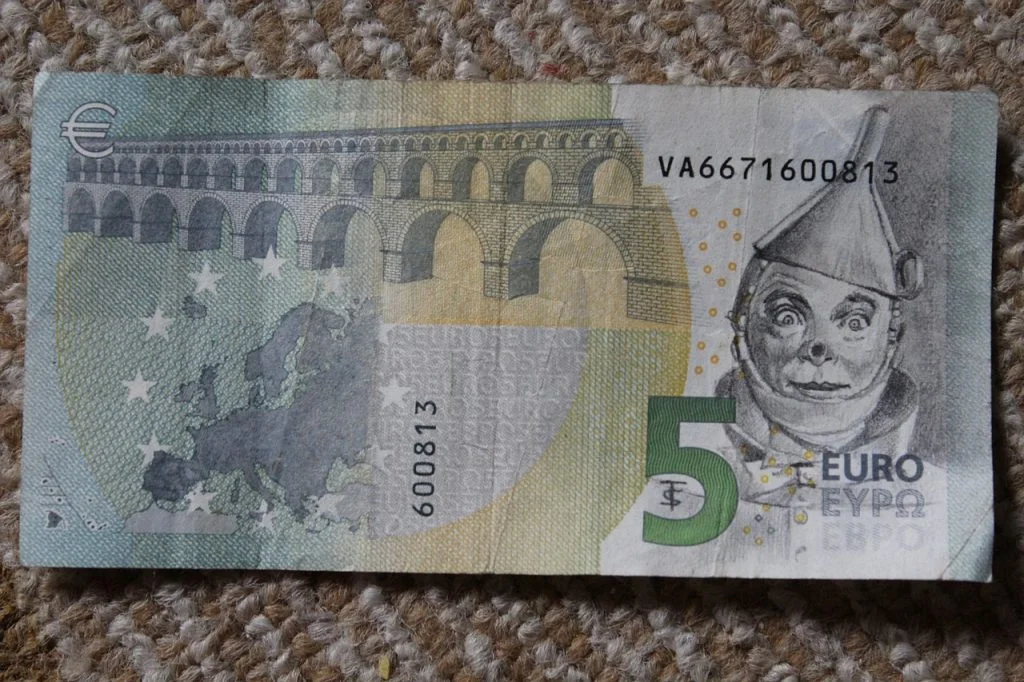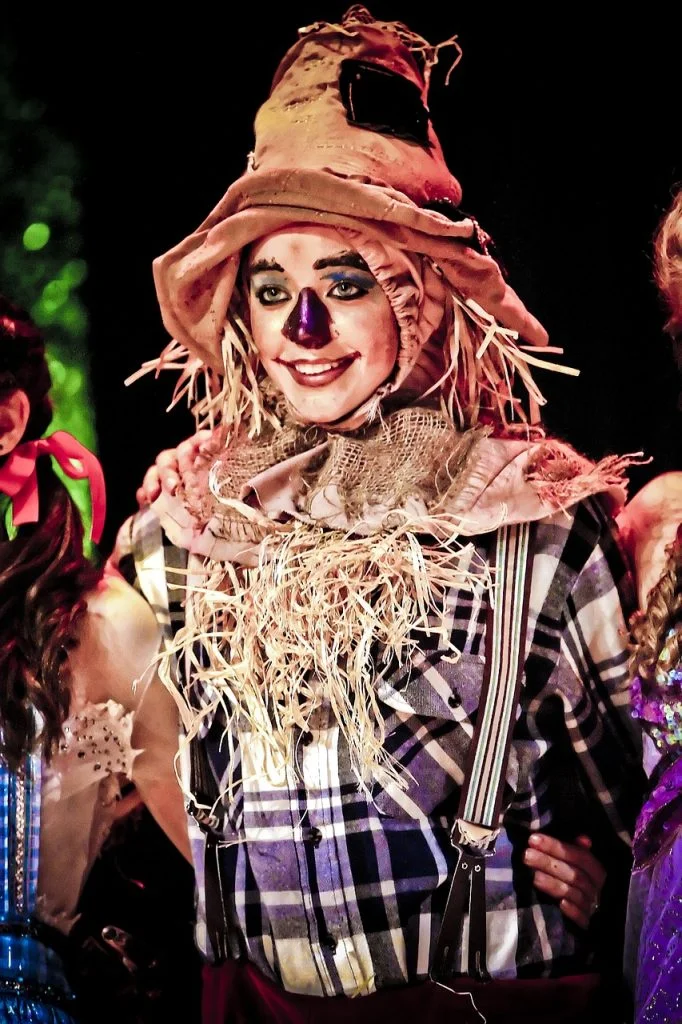Ever been caught in a whirlwind of flying monkeys and technicolor dreams? You see, my obsession with “The Wizard of Oz” started when I tried to recreate Dorothy’s ruby slippers using my mom’s red glitter nail polish. Let’s just say it didn’t end well for the carpet.
Through countless rewatches (and glitter mishaps), I’ve accumulated a treasure trove of facts about the iconic movie. Curious if the Munchkins had a wild party behind the scenes? Or if Toto earned more than the Tin Man? Buckle up, dear reader! We’re not in Kansas anymore.
There’s no place like home.
Dorothy
The Wizard of Oz Facts
Before we dive into the facts, I have to tell you that I created a quiz waiting for you at the bottom of the page to check if you are a true fan. I’m waiting to be impressed.
- The Wizard of Oz premiered in 1939, earning a distinguished place in film history as one of the most extraordinary movies ever made.
- It drew inspiration from L. Frank Baum’s 1900 masterpiece, “The Wonderful Wizard of Oz.”
- Judy Garland immortalized the character of Dorothy Gale, marking it as one of her most remarkable performances.
- In Baum’s original book, Dorothy’s famous slippers were silver, not ruby.
- Presently, seven known pairs of these iconic ruby slippers exist.
- The film featured the unforgettable song “Over the Rainbow “, earning an Academy Award for Best Original Song.
- The role of the Wicked Witch of the West was brilliantly portrayed by Margaret Hamilton.
- Hamilton endured burns due to a technical error during her dramatic exit from Munchkinland.
- The Wizard of Oz marked a significant advancement in cinema by utilizing Technicolor.
- The horse’s varying colors in the Emerald City scene were created using jelly crystals.
- Real lion pelts were used to fabricate the Cowardly Lion’s costume.
- Buddy Ebsen was initially chosen for the Tin Man, but withdrew due to makeup allergies.
- Jack Haley succeeded Ebsen as the Tin Man, donning a revised makeup.

- Ray Bolger skillfully played the Scarecrow, a character he was eager to portray from the beginning.
- The Wizard of Oz didn’t achieve significant commercial success initially but soared in popularity following its television broadcasts.
- The narrative is subject to various interpretations, including allegories of the historical and social occurrences of the 1890s.
- The transition from monochrome Kansas to vibrant Oz is viewed as a symbolic representation of the evolution from black-and-white to color in cinema.
- Dorothy’s companion, Toto, was a Cairn Terrier named Terry.
- Terry earned a salary of $125 weekly, outearning several human cast members.
- The depiction of the tornado was innovatively created using a lengthy muslin stocking and miniature models of a Kansas farm and prairie.
- Billie Burke, at 54, gracefully portrayed Glinda, the Good Witch of the North.
- Flying monkeys were maneuvered with complex wire systems, causing injuries to some side roles during filming.
- The film received six Academy Award nominations, securing two wins.
- A debunked myth suggests the visible hanging of a Munchkin actor in a particular scene.
- Munchkin actors received a weekly compensation of $50, which was half of what Terry, the dog, earned.
- Shirley Temple was an initial consideration for Dorothy’s character.
- Munchkinland’s creation involved one of the most intricate and costly sets of that period.

- The artificial snow in the poppy field scene was comprised of asbestos.
- The Witch’s guards, the “Winkies,” chanted a cryptic march without a definitive translation.
- Several ruby slippers were crafted for the movie, fitting the 5-6 women’s shoe sizes.
- Frank Morgan masterfully enacted multiple characters, including the Wizard and Professor Marvel.
- The film’s production budget approximated $2.8 million.
- Bela Lugosi was initially envisioned for the Wizard’s character.
- The “Surrender Dorothy” skywriting by the Wicked Witch was executed using real-life effects instead of animation.
- The Wicked Witch’s skywriting scene was accomplished through practical effects rather than animation.
- The original director, Richard Thorpe, was substituted by Victor Fleming, who was later succeeded by King Vidor.
- The Wizard of Oz was a monumental investment for MGM during that era.
- The Kansas segments, initially filmed in black-and-white, underwent post-production coloring to achieve a sepia tone.
- Dorothy’s dress was intentionally colored pink to enhance its appearance in Technicolor.

- MGM faced a loss of around $1.145 million following the film’s initial release.
- The Lollipop Guild emerged as a memorable element in the Munchkinland scenes.
- Its cultural, historical, and aesthetic significance has been honored by the National Film Registry.
- L. Frank Baum extended the Oz universe, authoring additional books.
- The Wizard of Oz has inspired numerous adaptations, parodies, and references across diverse media over the decades.
- In 2007, AFI’s 100 Years…100 Movies listed it as the third most remarkable film ever.
- Wicked, a Broadway adaptation, explores the histories of the Wicked Witch and Glinda.
- The Wicked Witch’s infamous threat became an iconic cinematic dialogue.
- A 3D and IMAX re-release commemorated its 75th anniversary in 2013.
- The memorable shift from black-and-white to color marked a revolutionary cinematic moment.
- The inclusion of the song “Over the Rainbow ” was almost omitted, but its eventual retention led to its status as an iconic cinematic melody.
The Wizard of Oz Myths

They were about to cut one of the most famous songs from the film. Is this real or not? Let’s find out together.
- The Original Slippers Were Silver, Not Ruby
That’s actually true! In L. Frank Baum’s original book “The Wonderful Wizard of Oz,” the slippers that Dorothy wears are indeed silver. Hollywood changed them to ruby for the 1939 film to take advantage of the new Technicolor process, which made the red shoes pop on screen. - A Munchkin Actor Hung Himself on Set
This is a long-standing urban legend. If you look closely at the scene in question, you’ll see that the movement in the background is actually a bird, not a person. The filmmakers had brought in birds to make the background more lively. - They almost cut “Over the Rainbow” from the film.
Hard to believe, right? Studio executives almost removed the song, thinking it slowed down the action, even though it became one of the most famous in cinema history. Thankfully, wiser heads prevailed, and it stayed in. - The Film Was an Immediate Blockbuster
Surprisingly, “The Wizard of Oz” didn’t hit it big at the box office upon its initial release. It was only after multiple re-releases and its annual airing on television that it became the beloved classic it is today. - They paid Toto more than they paid the Munchkin actors.
This one often comes up, but the truth is a bit more nuanced. Toto’s trainer did receive a higher daily rate than the individual Munchkin actors. However, there were many Munchkin actors, and their combined pay was certainly more than Toto’s. Nonetheless, it does highlight some of the unfair pay scales of the time.
No products found.
The Wizard of Oz Quotes

This classic novel has many iconic quotes, but let’s enjoy five of the most popular together.
Toto, I’ve a feeling we’re not in Kansas anymore.
Dorothy
The moment Dorothy lands in Oz and takes a look around, it’s clear she’s not in Kansas anymore. This line is pretty much the equivalent of “We’re definitely not at home!” and has turned into a catchphrase for when things get, well, weird.
There’s no place like home.
Dorothy
No matter how wild the adventure, Dorothy sets her heart on one thing: getting back home. This line is all about that warm, fuzzy feeling we get thinking about our own comfy bed after a long trip.
Lions, and tigers, and bears! Oh, my!
Dorothy
Walking through a creepy forest with your pals and expecting wild beasts at every turn? That’s the vibe here. Dorothy, Scarecrow, and Tin Man are pretty much chanting the 1930s version of “Are we there yet?”
I’ll get you, my pretty, and your little dog too!
Wicked Witch
The Wicked Witch really has it out for Dorothy (and poor Toto). When she throws out this line, it’s basically her version of “This isn’t over!” And yep, she’s as scary as she sounds.
Pay no attention to that man behind the curtain!
Wizard of Oz
Big reveal! The mighty Wizard of Oz is just an average Joe pulling some levers. This line is a funny reminder that things aren’t always what they seem, especially when there’s a curtain involved.
The Wizard of Oz FAQ

We are one section away from the ultimate showdown (ok, I mean the quiz). Let’s see some of the most-asked questions about the movie.
- What is the meaning of “The Wizard of Oz”?
The meaning is that there is no place like home. It’s the story of Dorothy and her wild adventures in the land of Oz. - Is “The Wizard of Oz” a Disney movie?
It might surprise you, but no. It’s an MGM film. - Who wrote “The Wizard of Oz”?
L. Frank Baum is the writer of “The Wonderful Wizard of Oz”. - Where was “The Wizard of Oz” filmed?
This might surprise you as well, but the crew shot most of the scenes inside an MGM studio. That was quite a transformation for a studio back then. - When did “The Wizard of Oz” come out?
The movie hit the big screen on August 25, 1939.
No products found.
The Wizard of Oz Quiz

We have had a great journey together so far with all this epic information about the movie. But now it’s time to prove how much of a fan you are. Miss a question, and you might end up stuck in poppy fields forever!
Conclusion
After diving deep into the whimsical world of Oz, I’ve come to a crucial realization: my life is severely lacking in the munchkin department.
How did Dorothy manage to keep a straight face with all that singing and dancing around her? If you could join any group in Oz, who would you be hanging out with? The Lollipop Guild, or maybe the witch’s entourage? Drop your pick below!
Source Used For This Article

